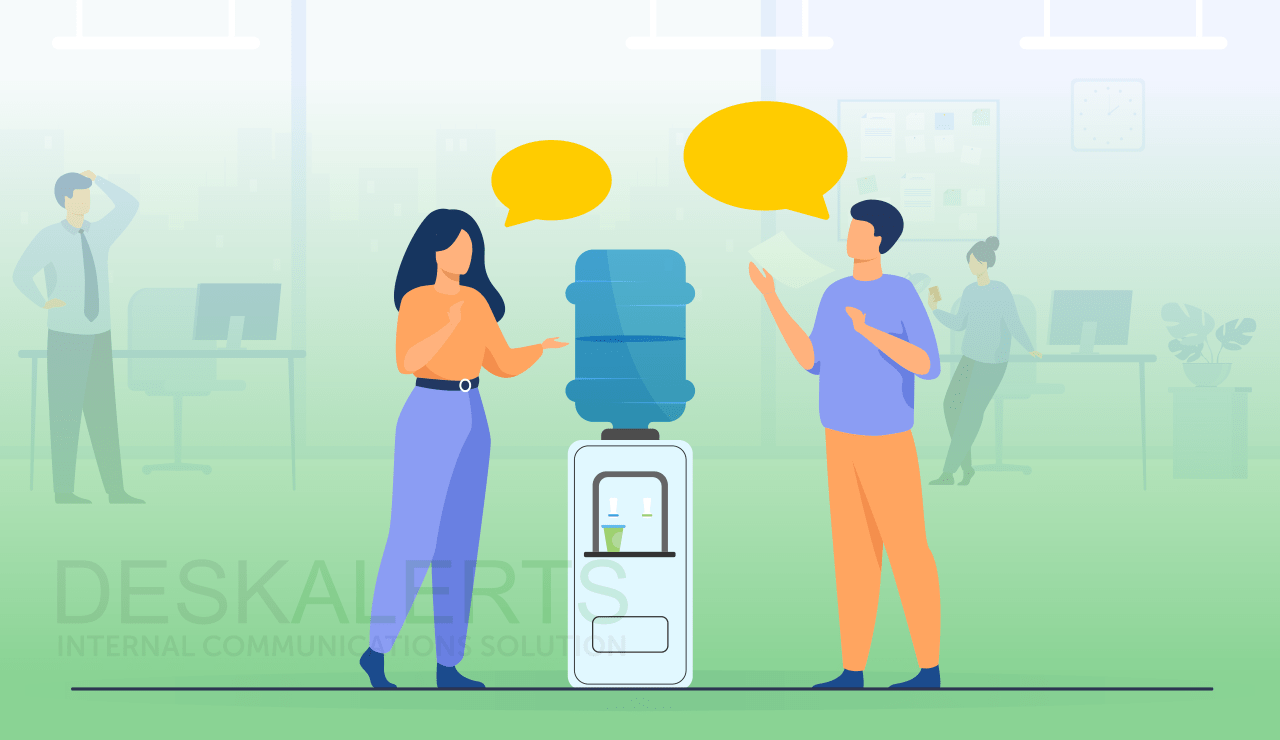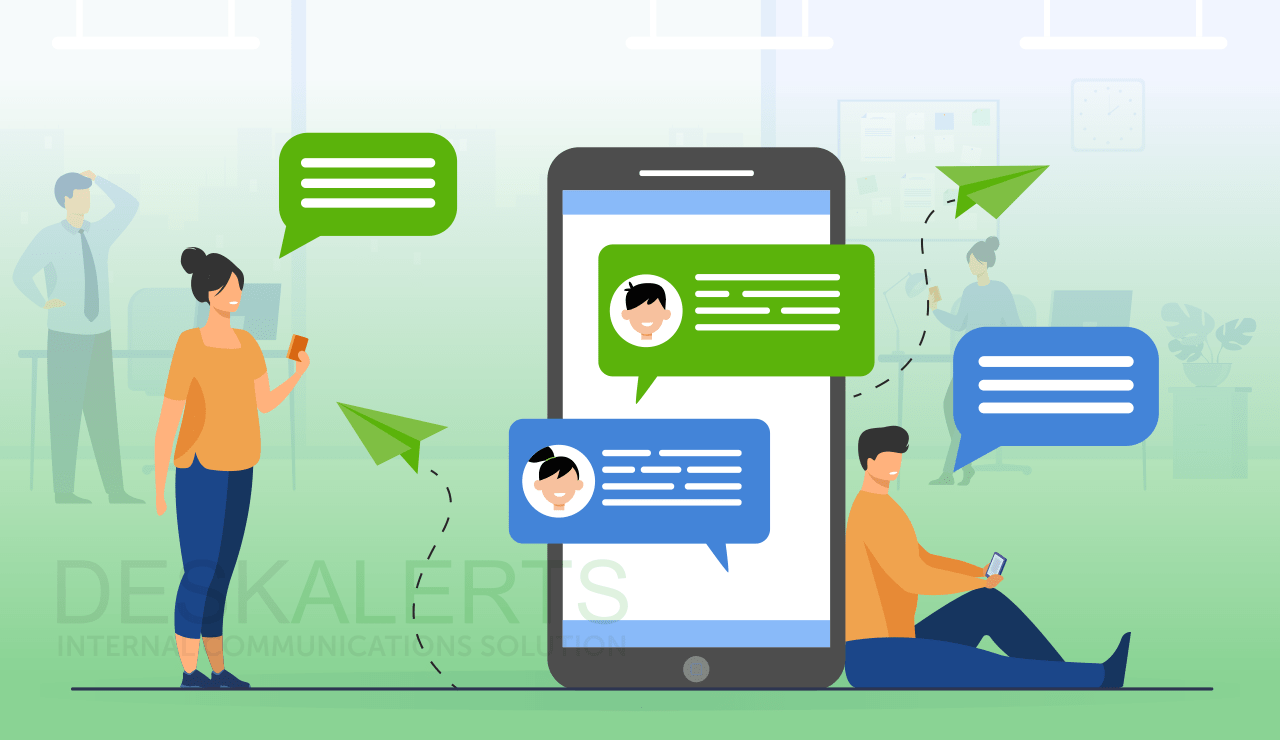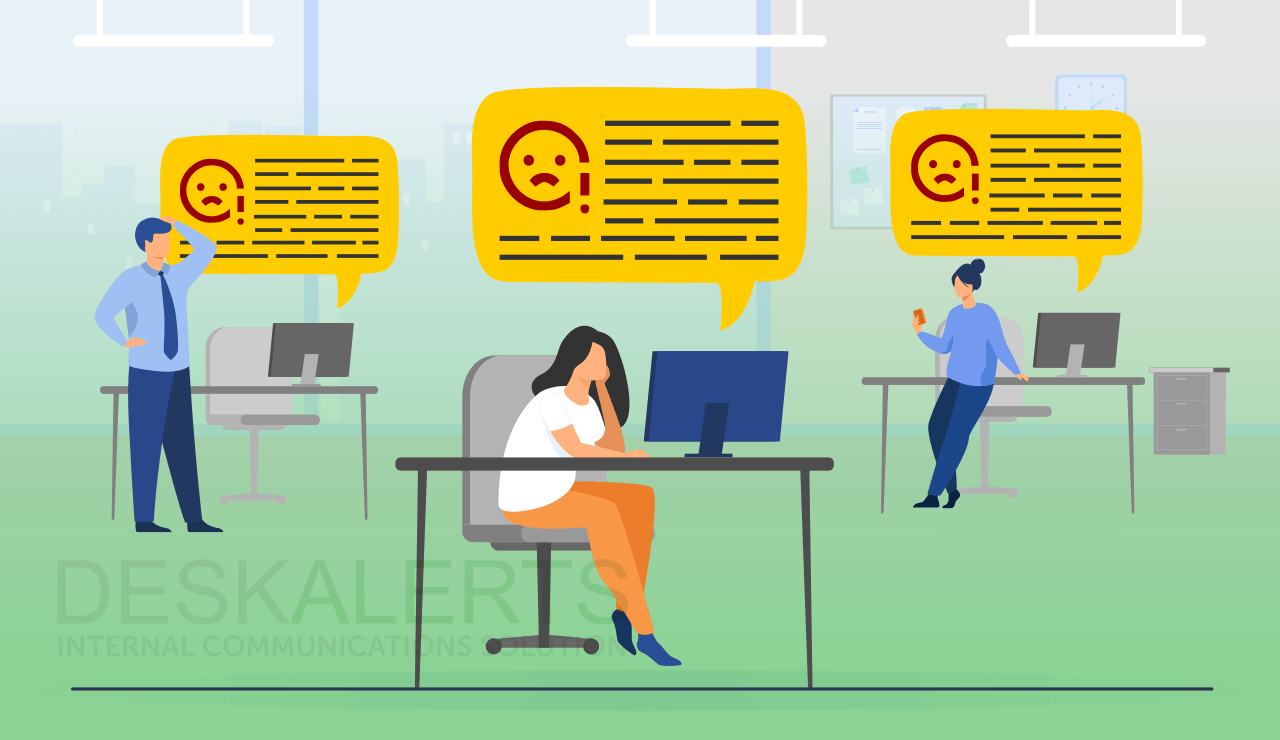
Casual conversations in the workplace – sometimes known as ‘water cooler talk’ can have many benefits when it comes to team bonding and relationship building, which in turn is beneficial for productivity and employee morale. Unfortunately, many managers see it as unproductive time and actively discourage it. With the right attitude and approach to watercooler talk, you can harness its usefulness.
Table of contents
What is water cooler talk?
What are the benefits of water cooler talk for your team?
How to have water cooler chat for remote teams
How to prevent water cooler talk having a negative impact on your organization
What is water cooler talk?
The meaning of term ‘water cooler talk’ refers to the casual conversations people in the office have with one another when they’re visiting the water cooler. They might talk about their weekend plans, talk about TV shows they’re watching, films they’ve seen, sports, books, cars, anecdotes about their families, topics that are in the news and more.
Of course, these conversations don’t always happen around an actual water cooler – they can happen anywhere where employees have an opportunity to speak casually and informally. It might be in the break room, in meeting rooms when waiting for a meeting to start, in the elevator, or even when they walk past one another’s desks and stop to say hello.
Regardless of where the conversation takes place, it’s an excellent opportunity for employees to take a much-needed break, get to know their colleagues, and form bonds.
Water cooler talk is often regarded as negative by managers who don’t understand its benefits in the workplace.
What are the benefits of water cooler talk for your team?
Water cooler talk is often regarded as a negative in the workplace by managers who don’t understand its benefits in the workplace. They think that it is a hindrance to productivity and see it as employees wasting time, instead of it being useful for recharging, taking a break and building the foundations of successful working relationships.
But they are wrong.
These are the main benefits of water cooler conversations:
1. It is beneficial for morale
The type of workplace where employees feel they aren’t able to talk to their colleagues and feel as though they are being constantly monitored and have to account for every minute of downtime is one that many are increasingly turning their backs on.
This sort of environment can be stressful to work in and leads to low levels of engagement and low morale. People want to work in a relaxed, fun, friendly environment. When morale is high, people are more likely to go above and beyond in their roles to achieve on behalf of the company.
2. It improves employee retention
Building on the point about morale above, having a positive workplace culture means that people like going to work and are less likely to look for a job elsewhere. Recruiting new employees is expensive, and you lose corporate knowledge that is hard to replace. When people build good working relationships - and even genuine and enduring friendships – with colleagues, they are more likely to want to continue to work in that environment. And because a large number of people who quit jobs do so to get away from a bad manager, there’s a benefit here to showing that management trusts employees enough to let them have social conversations so long as their work isn’t affected.
More on the topic: What do employees want?
3. It helps to build relationships and assists with collaboration
Whether the water cooler talk is between members of the same work team, or between people from different parts of the company, these opportunities for people to get to know one another better help with working relationships. If you’re talking about sports or television around the water cooler, it gives you a chance to understand someone else and their interests and maybe even find some common ground outside the workplace context. This form of ‘getting to know you’ is especially useful for teamwork and enhances cross-departmental collaboration.
4. It helps with problem solving and innovation
Casual conversations can often turn to work-related ones. For example, one colleague might ask the other what they are working on or how their project is going. They may reveal a problem or roadblock that they’re trying to overcome, and the other colleague might be able to offer a fresh perspective. Other times colleagues might share tips and experiences. These types of conversations happen spontaneously and you can’t necessarily plan for them in other ways.
5. Breaks are beneficial for wellbeing
Taking regular breaks is good for both mental and physical health and wellbeing. It’s important that your employees step away from their workstations regularly during the day, and encouraging them to do so can have benefits such as lower levels of stress, less absenteeism and more productivity.
Do you want to know how stressed your employees are? Read this article about the work stress survey.
6. It can help to build relationships between managers and employees
When managers take the time to build a rapport with their employees, it can help to establish trust and build solid relationships. Often employees can be hesitant to chat with managers, and having water cooler chat can help to break down these communication barriers and build more personal relationships.
How to have water cooler chat for remote teams

Many modern work teams are no longer physically in the same place at the same time during their workday. Remote work was already on the rise before the COVID-19 pandemic came along and accelerated the number of people who are working remotely. One of the downsides to working remotely for many people has been the loss of social interaction and casual conversations with colleagues.
To overcome this, many businesses have been focusing on introducing a ‘virtual water cooler’ to replicate these types of interactions for remote teams using digital tools.
There are different ways to do this, and you may decide to implement one or more in your organization to maximize effectiveness. Ideas include:
- Set a dedicated space on Teams, Yammer, Facebook Messenger, etc where employees can have informal conversations on a range of topics.
- Have informal team meetings with icebreakers and other ‘getting to know you’ type questions. While working remotely, my team has a Friday afternoon Zoom meeting once a month that is purely dedicated to water cooler type conversations. We also ask a question that everyone has to take turns answering (recommend a great book, what’s your favorite meal, what was the best vacation you ever took, etc).
- Have scheduled virtual coffee breaks – along the same lines as above but more regular and shorter in nature where everyone can grab a cup of coffee and have a chat for 10 or 15 minutes.
- Virtual team building activities such as trivia or gamification initiatives like online scavenger hunts are also a way to encourage social interaction and water cooler talk by bringing people together.
Use multichannel approach for better communications
DeskAlerts is a multichannel communication solution for remote and office-based teams. It can serve as a great alternative to corporate email and can be integrated with your current communications channels (including MS Teams).
Over 1,000 messages can be sent via DeskAlerts within a few seconds, including:
- emergency alerts
- pop-up notifications
- video messages
- scrolling tickers
- digital signage backgrounds, etc

How to prevent water cooler talk having a negative impact on your organization
Unfortunately, human nature means that talk around the water cooler can also have a downside: they can be a source of gossip and rumors that spread throughout the workplace, which can do more harm than good. Gossip and rumors can create a toxic work environment, spread misinformation, cause mistrust, lower morale and ultimately kill productivity.
Instead of discouraging water cooler chat altogether, you can take proactive steps to mitigate this side of it.
1. Have protocols about gossip and rumors
Gossip and rumors isn’t always limited to chatter about the company: sometimes it is aimed at individuals and can be malicious. People who are the target of this type of behavior can become stressed out and may even launch a workers compensation or harassment suit.
When people are found to be behaving in this way, you need to have appropriate human resources protocols to deal with it. Depending on the severity, it could be anything from a mild rebuke to a formal disciplinary action.
Everyone has the right to feel safe at work and by demonstrating your company won’t stand for this behavior, it can help people feel more comfortable in the workplace.
2. Effective internal communication can minimize rumors
Often, rumors take hold because of an absence of official information. People can speculate and fill the void with their own ideas and this can spread very quickly – and once it does, it can be hard to replace the misinformation with correct information. It’s important that you have regular communications with your employees on a range of issues that are relevant and of interest to them to prevent them jumping to conclusions and deciding on their own ‘facts’.
Your internal communications should be:
- Sent in a timely manner – don’t wait too long or the rumor mill will beat you to it.
- Be clear and concise and easy to understand – if it is vague or complicated, people will jump to conclusions.
- Sent in a way that people will see – a multichannel approach is best to ensure that everyone will receive the information. For example you can send pop-up alerts, desktop tickers, screensavers, wallpapers, surveys and more.
3. Be transparent
In addition to communicating regularly with the right tools, you need to ensure that you are transparent with employees. If you’re being opaque with the truth or withholding some bits of information while sharing others, you will undo any of the good work you have achieved in building trust.
***
Water cooler chat is a good way to build a functional, cohesive team – so long as you don’t let gossip and rumors undermine it. Implementing effective internal communication strategies with the right tools can help you to make the most of these informal relationships.
FAQ
What is the benefit of water cooler talk?
Water cooler talk helps to build company culture and encourages employees to get to know each other in informal ways when they discuss a range of topics that aren’t necessarily related to their work. This has benefits including boosted employee engagement, increased productivity and profitability, lower levels of stress, improvements in employee retention, increased innovation, problem-solving, improved collaboration and a positive work environment.
What is water cooler gossip?
Water cooler gossip is an unproductive form of water cooler talk where employees engage in talking about people or policies or projects in a malicious way. Often this might involve spreading mistruths. If gossip is rife within an organization it can cause low morale and can be extremely harmful to the employees who are the subject of the water cooler gossip.
How can I remotely get water cooler conversations?
There are different ways that you can implement and encourage virtual water cooler conversations in your organization for your remote teams to participate in. This can include using digital platforms such as Teams, Yammer, Basecamp, Asana and more. You can also have group chats on social networking platforms like Facebook, or hold video-conferencing sessions specifically designed to be an informal and casual way for the team to meet and converse.
 Caroline Duncan
Caroline Duncan









